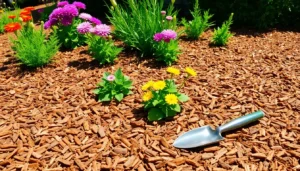Living with ADHD can feel like trying to herd cats while juggling flaming torches. Home organization often becomes a daunting task, leaving many feeling overwhelmed and frustrated. But fear not! With the right strategies, transforming chaos into calm is not just a dream—it’s entirely possible.
Table of Contents
ToggleUnderstanding ADHD and Its Impact on Home Organization
ADHD affects attention and executive function, presenting unique challenges in maintaining an organized home. Individuals with ADHD often struggle with focus, which can complicate everyday tasks and clutter management.
The Nature of ADHD
ADHD is a neurodevelopmental disorder that manifests in various symptoms, including inattention, impulsivity, and hyperactivity. Each individual experiences these symptoms differently, often leading to inconsistent organizational skills. The brain’s executive function deficits play a significant role; these deficits impact planning, prioritizing, and executing tasks. As a result, maintaining focus on home organization becomes particularly challenging for those with ADHD.
Common Challenges in Home Organization
Clutter often accumulates more quickly for individuals with ADHD. Distractions can disrupt the organization efforts, making it difficult to sort items or complete tasks. Time management issues arise; losing track of time may lead to unfinished projects. Additionally, decision fatigue can result from having too many choices, further complicating organization. Finally, emotional responses to clutter or disarray can trigger anxiety, making the process even more daunting.
Strategies for Effective ADHD Home Organization

Implementing effective home organization strategies significantly helps individuals with ADHD manage their environment. Focus on decluttering and creating functional spaces to foster a sense of control and calm.
Decluttering Techniques
Adopting specific decluttering techniques simplifies the process. Start by tackling one area at a time, such as a drawer or a corner of a room. Utilize the “four-box method” where boxes label keep, donate, toss, or relocate. Maintain a consistent time limit for each session to minimize feelings of overwhelm. Prioritize daily or weekly decluttering sessions to prevent accumulation. Visual cues or reminders can aid in keeping on track and focused.
Creating Functional Spaces
Designing functional spaces enhances organization efforts. Utilize storage solutions like bins, shelves, and labels to create designated areas for items. Establishing clear, specific zones for activities or tasks improves accessibility and reduces distractions. Color-coding items or using visual boundaries for different areas helps reinforce organization. Aim to keep items frequently used within easy reach to minimize forgetfulness. Regularly review and adjust setups to meet changing needs and preferences.
Tools and Resources for ADHD Home Organization
Finding the right tools and resources can significantly improve organization for individuals with ADHD. Several effective options exist.
Organizational Tools
Baskets, bins, and clear containers offer practical storage solutions. Labeling these containers simplifies locating items. Additionally, using hooks and wall organizers maximizes vertical space. A whiteboard or daily planner aids in tracking tasks and appointments, providing visual cues for routines. Color-coded systems make identifying categories easier. Lastly, timers help maintain focus by encouraging short bursts of productivity.
Technology Aids
Smartphone apps provide excellent support, promoting organization and time management. Calendar applications can send reminders for important tasks. Task management tools allow individuals to break projects into manageable steps. Voice recording apps capture on-the-go thoughts quickly. Additionally, digital note-taking apps foster clarity by organizing ideas efficiently. Online forums or communities offer peer support and share strategies for organization, enhancing motivation.
Tips for Maintaining Organized Spaces
Maintaining organized spaces requires consistent effort and strategic planning. Implementing practical routines and involving family members can greatly enhance organization at home.
Establishing Routines
Creating structured routines plays a vital role in sustaining organization. Start by identifying key tasks that require attention each day. Incorporate specific time slots for decluttering, cleaning, and organizing. Engaging in daily chores at the same time fosters predictability, making it easier to maintain order. Utilize checklists to track completed tasks, ensuring accountability and motivation. Establish a regular review of living spaces at the end of each week. This practice encourages reflection on successes and areas needing improvement. Incorporating these rituals into daily life leads to increased productivity and reduces feelings of overwhelm.
Involving the Family
Involving family members strengthens home organization efforts considerably. Encourage open discussions about organizational goals and responsibilities. Assign specific tasks to each family member, promoting a sense of ownership and accountability. Use visual aids like charts or schedules to clarify everyone’s responsibilities. Additionally, schedule regular family meetings to evaluate organization systems. These discussions can include sharing successes and generating ideas for improvements. Cultivating a collaborative atmosphere fosters teamwork, making organization a shared priority. Engaging family members in this way transforms organization from a personal challenge into a collective mission.
Creating an organized home environment is achievable for individuals with ADHD. By implementing tailored strategies and utilizing effective tools, they can transform their living spaces into areas of calm and productivity. Consistency in maintaining organization is key and involving family members can enhance the process.
With structured routines and open communication, the journey toward a more organized home becomes a shared effort rather than a solitary challenge. Embracing these techniques not only fosters a sense of control but also empowers individuals to navigate their unique organizational hurdles with confidence.







